The term 3D Human is often perceived as a 3D full graphical representation of a chatbot body.
The first 3D human body in computer graphics appeared in the science-fiction movie Futureworld produced in 1976, which featured an animated 3-dimensional hand and face. The animation was created by Edwin Catmull and Frederic Parke, a student of the University of Utah.
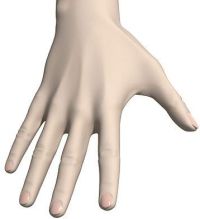 The image presents the first digitized hand created by Edwin Catmull in 1973.
The image presents the first digitized hand created by Edwin Catmull in 1973.
Dr Edwin Catmull contributed to development of 3D computer graphics and thereby revolutionized the entertainment industry. In 2001 he became president of Walt Disney Animation Studios and Pixar Animation Studios.[1]
Dr Frederic I. Parke created the first 3D physical human face model in 1972.
Since 1999, dr Parke’s research has been in the area of conversational interfaces which combines a long standing interest in facial animation with the use of speech recognition and speech synthesis.[2]
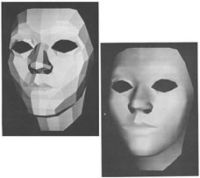 The image shows first animated faces created by Frederic I. Parke.
The image shows first animated faces created by Frederic I. Parke.
Typical usage
3D human figures are often associated with virtual worlds that exist on the Internet. They interact with each other in a social networking environment within those virtual worlds - such as Moove, IMVU, Rocktropia, Second Life.
3D Humans are equipped with a three-dimensional body, and therefore they can interact with the environment both in verbal and non-verbal way. Have a look at the video as produced by Pendulum Studio’s Alter Ego division how realistic 3D facial animations of 3D Humans can be.
Realistic facial animation is a challenge for every 3D animator. This demonstrational video of the academic paper Surface Detail Capturing for Realistic Facial Animation shows a 3D facial animation system for capturing both geometrical information and illumination changes of surface details, called expression details. With the expression detail mapping, the resulted facial animations are more life-like and more expressive.
Look at the video example of Doug Jones’ head which is being rendered in real-time (actor played, among others, in Hellboy, Pan’s Labyrinth, Fantastic Four: Rise of the Silver Surfer). It has been made by NVIDIA and rendered on the GeForce 8800 Ultra graphics card.
Except facial animation, the 3D animator should also have knowledge of the skeletal/muscular system of the whole body and the manner in which it works as a mechanical device. The picture presents an example of a 3D human female model presented in 3D human modelling tutorial written by Peter Ratner.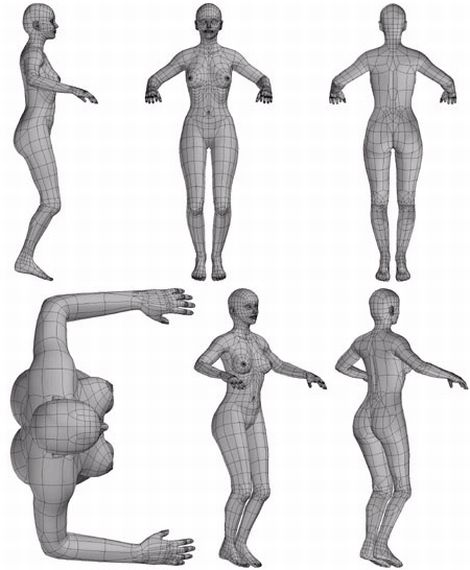
Scientists from Robotics Institute of Carnegie Mellon University work on developing human motion modelling system. The picture shows an example of a 3D human motion modelling system. 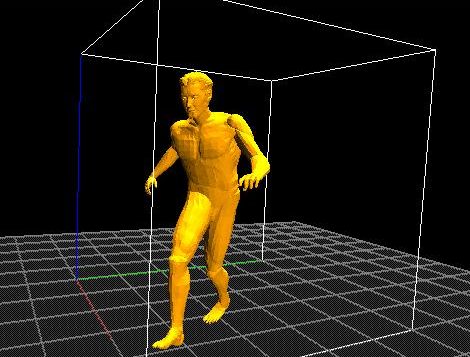
In addition to the 3D human modelling system, KTH Royal Institute of Technology created several Multimodal speech synthesis videos demonstrating how to deal with automatic generation of voice and facial animation.
Discussing the usage of the term3D Human, this term is typically used by computer graphics and 3D animators modelling the human body in its various attitudes and movements. It is also used by medical specialists when using an animated version of a human anatomy model.
Tools to create 3D Humans
There are many tools to create three-dimensional human body models and 3D Humans. We would like to present two of them:
Make Human - an open source tool for creating 3D characters.
How to Design a Free 3D Human Figure - an instructional article written by Jennifer Williams.
Background
The term 3D Human is an abbreviation of 3-Dimensional Human meaning a computer-generated humanoid character presented in three-dimensional space.
Human meaning “pertaining to man” originates from the XIV century. In earliest use humain(e) from French. Latin hūmānus, related to homō - man. The term humane persisted in general use untill early XVIII, but the form human (based directly on Latin) occurs late XVII. The variant humane became restricted during XVIII for the senses (i) characterized by disposition or behaviour befitting a man (formerly specifically “gentle, courteous” XV-XVI), and (ii) pertaining to studies that tend to humanize or refine (XVII century).[3]
Human - belonging to man or mankind; having the qualities or attributes of a man; of or pertaining to man or to the race of man; as a human voice; human shape; human nature; human knowledge; human life.[4]
3D stands for 3 dimensional computer graphics which creates a realistic visual representation of an object.
The word dimension originates from late XIV century, meaning measurement or size, from Latin dimensionem (nominativus dimensio) - a measuring, from past participle stem of dimetri - to measure out, from dis + metiri - to measure. Meaning “any component of a situation” is from 1929.[5]
A dimension is a measure of spatial extent, especially width, height, or length.[6]
3d Human pages
Although we use chatbot as the main synonym on this website, please do not be confused. There are more than 161 synonyms in use by academics, business and 3d human enthusiasts! It is simply a matter of reading between the lines.
Please check out our main directory with 1376 live 3d human examples (an overview as maintained by developers themselves),
our vendor listing with 253 3d human companies
and 3d human news section
with already more than 368 articles! Our research tab contains lots of papers on 3d humans, 1,166 journals on 3d humans and 390 books on 3d humans. This research section also shows which universities are active in the 3d human field, indicates which publishers are publishing journals on humanlike conversational AI and informs about academic events on 3d humans. Also, check out our dedicated tab for awards, contest and games related to the 3d human field,
various forums like our AI forum by 3d human enthusiasts
and add any 3d human as created by yourself and your colleagues
to our 3d human directory. Please do not forget to register to join us in these exciting times.
A selection of pages on this website using '3d human':
Alternative usage of 3D Humans
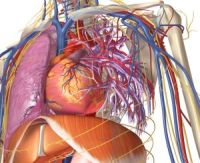 The term 3D Human is also referred to as a complete and anatomically accurate human body model. As you can conclude from the picture, it is designed to teach an anatomy or physiology course in medical industry.[7]
The term 3D Human is also referred to as a complete and anatomically accurate human body model. As you can conclude from the picture, it is designed to teach an anatomy or physiology course in medical industry.[7]
Alternatively, 3D humans can be used as well to study, paint or sketch the human anatomy. Cloudstars developed 3D virtual human anatomy studio which reveals both superficial and deep muscles, tendons, and bones. The video below presents this 3D human application designed specifically for artists.














